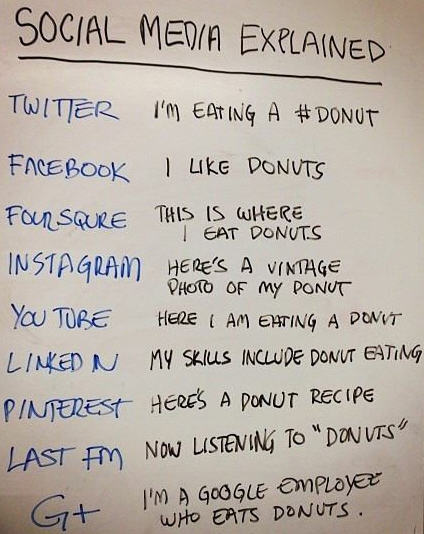
6 marketing mistakes to avoid
Last week, I covered the habits of successful content marketers, but this week I’m focusing on the common mistakes we marketers make.
Whether you’re avoiding social media, not optimizing your content, or zeroing in on the wrong metrics, there are many bad habits we make in our digital marketing efforts and most often without even realizing it!
As the end of 2019 approaches, let’s correct these six common marketing mistakes to have a more productive and successful 2020.
Stop making these 6 mistakes in your marketing strategy

1. Not knowing your audience
I loved Pirates of the Caribbean (OK, I still do) but when the sequel came it, it wasn’t nearly as good. Not just because it was a sequel, but in a way it seemed Disney didn’t know their audience.
We loved the first one because it was original and different. The second movie played up the same jokes expecting the same laughs, and took it to a new level of disbelief. Instead of understanding what we loved and improving on it, they just repackaged what we loved and tried to pass it off as something new and exciting.
Let’s not have the sequel effect in our content marketing. I’m not saying you can’t use templates or repurpose well-written content, but you also have to know, really know, what your audience wants from your brand and not serve up a half-baked piece of content.
Buyer personas can help you make sure you’re getting the right message to the right person in the right channel, but you also need to be able to put yourself in the shoes of that customer. Verify the assumptions and conclusions you’ve drawn from your buyer personas through interviews, case studies, and surveys, or learn where you could improve in your messaging and targeting.
Learn their language, learn their buying behaviors, learn what makes them loyal, and use that in your marketing. That could be speaking in their own language in your targeted keyword terms as different users use different words to describe the same product, and you need to be able to blend in with all those different users.
Put less of a focus on selling them but instead ask for an invitation to their world so you can better serve them. Today’s selling isn’t about how awesome the product or service itself is, but how awesome it makes its customers’ lives.
2. No social media strategy
It’s almost 2020. How can you not have a social media strategy?
Key components of your social strategy include: goals, a target audience, performance metrics, and obviously content. You need to know what you want to accomplish on social media, how you’ll measure your success, and what content you’re going to share to get there.
Is your goal to increase sales? Maybe it’s just to drive more traffic to your site? Maybe it’s to grow your following and potential customer base. There are no right or wrong goals, well besides just thinking “I should do social.”
Focus on networks you can do well, as quality is way more important than quantity, unless you’re Buzzfeed and producing 20 quizzes about Disney princesses that you know people will click on. It’s better to have one or two well-built social profiles than five haphazard ones.
Quick social media marketing tips:
- Follow the 80/20 rule: 80% of your content is fun, engaging, and not sales-based, the other 20% can be promotional
- Post when your followers are online: Insights on Instagram and Facebook show you when your audience is more likely to be active on the network, so a perfect time for you to be posting
- Ask questions: Encourage engagement with questions instead of just copying the title of the link you’re sharing
- Reply: Social is meant to be social! Respond to your followers and keep them involved in conversations
- Use appropriate hashtags on Twitter and Instagram: The fastest way to look like a spam account is to have a wall of 90 hashtags with your post but no real written content. Limit yourself to five to seven quality tags
3. Not doing SEO
This surprising mistake is relatively common, especially for smaller brands, and is one that cannot be ignored. Your site needs Search Engine Optimization (SEO) to be ranked appropriately in the Search Engine Results Pages (SERPs).
Even easy optimizations can help your site perform better. Update Alt text, add in new keywords, update an old blog post or webpage, add some internal linking. If you want to focus on optimizations that’ll generate fast results, focus on:
- Keywords: Double check that your targeted keyword terms are still relevant and driving traffic to your site. Aim to have a keyword density of 1-3% per page or blog post.
- Links: Include a healthy amount of internal links within your content, and try to secure external links. Start small by sharing your content on social and in email campaigns. Then work bigger by pitching your content to others in your industry and asking for a link back to your content, or start linking to theirs first!
- Quality and relevant content: Quality will always win out in the long-term. I’m often surprised when some of the options in the SERPS are five years old, but they’re still relevant and have all the answers I need for my query. Make sure your content is achieving the goal of sharing the most accurate information you have to build up your site’s EAT (Expertise, Authority, Trust).
- Use free tools: Google Analytics and Google Search Console are invaluable to tracking the success of content and social media marketing – and best of all, they’re free! You can’t manage what you don’t measure, so make sure you’re tracking your efforts and learning what impact the changes to your site’s content actually has.
4. Using the same tactics across every channel
Is it easier to bulk upload social media posts so they’re identical across each network and post at the same time? It sure is. Is it going to be a winning strategy? Nope, it sure isn’t.
You can’t do the same thing across different channels and expect amazing results. Sorry, just won’t happen. You have to tailor posts to the channel and audience. I never use hashtags on Facebook posts as that’s not what Facebook users are looking for, but I sure do use them on Twitter and Instagram to help other users find my content through tags they follow or like.
- Images and video: Create unique graphics for each channel. I like to think of this is as vertical vs. horizontal. Vertical videos for Instagram and horizontal videos for Facebook and Twitter. Want to share an inspirational quote? Great, use a photo as a backdrop for Facebook but use a light colored background for Instagram.
- GIFs: I think GIF reactions are great on Twitter and Facebook – just check out Betabrand (the yoga work pants people), they’re fantastic at using memes and great GIFs to react to their customers’ posts.
- Text: Keep It Short, Stupid on Instagram and Twitter, but feel free to expand the details a bit when posting on Instagram.
- Day of the week & time of day: People are checking different accounts at different times of the day, and some days are more popular on certain networks. Use your Insights tabs to learn more about when your specific audience is online and post around those times. Try to avoid posting the same link, message, and image across all of your channels at the same time.
Treat each network like it’s an individual community and play by the rules.

5. Analyzing the wrong metrics
We have a lot to measure in digital marketing: Impressions, conversions, cost per conversion, click-through rate, open rate, cost per click, return on investment, engagement rate, follower growth, sessions, bounce rate, time on site, and so on.
You need to look at the bigger picture and your customer journey to decide what metrics matter most to your marketing efforts and focus on improving those.Take your goals into consideration too. If your goal is to increase revenue, focus on conversions, CTR, and bounce rates. If your goal is brand awareness, focus on visits, engagement rate, and time on site.
6. Not being patient
No, you won’t be the #1 Google search the next morning unless you’re willing to spend a ton of money on blackhat SEO practices and waste thousands on bad Google ads. Digital marketing takes time. It’s a marathon, not a sprint.
It takes time to publish and promote quality content. It takes time to build up a following. It takes time to earn your customers’ trust. Be patient and just keep on producing quality content and engaging with your followers and the results will come.
Every time you get frustrated when you’re not seeing results just imagine that whispery voice from Field of Dreams: If you build it, they will come.





